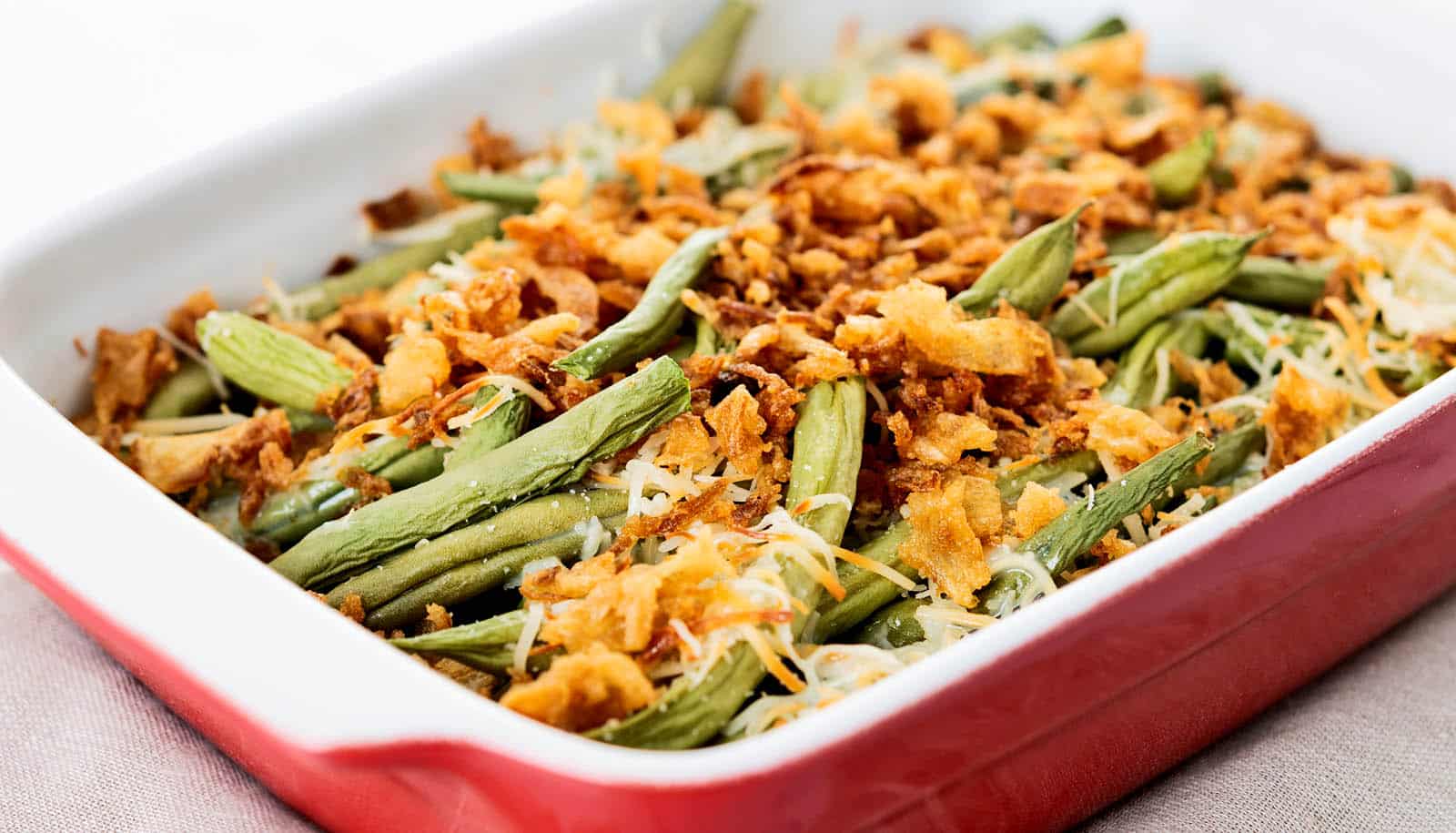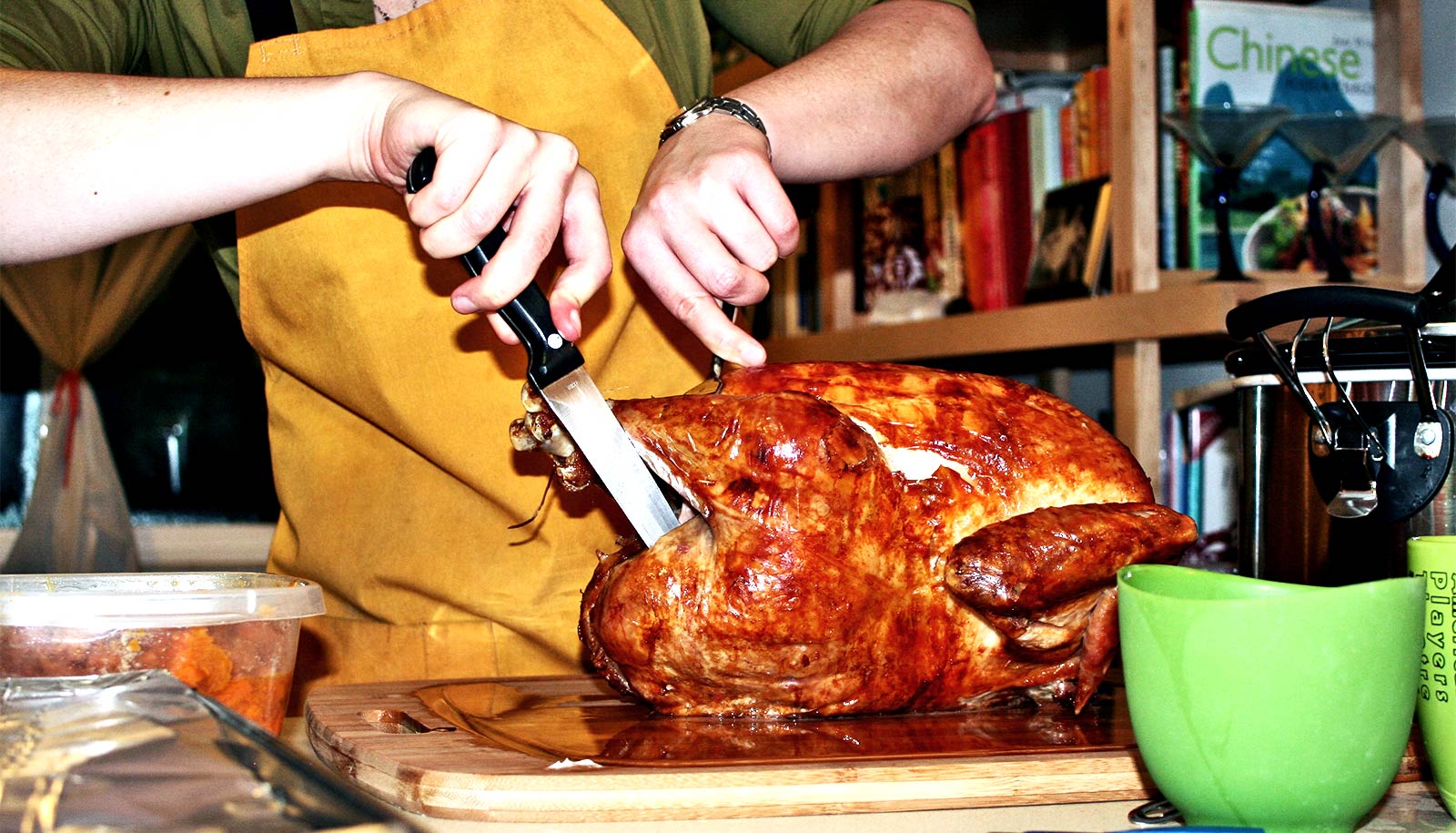Thanksgiving dinner has changed a lot since the original feast and continues to evolve to reflect the diversity of today’s United States, historian Anna Zeide explains.
Here Zeide, associate professor of history and director of the Food Studies Program at Virginia Tech, shares the history behind Thanksgiving food:
What was on the table at the first Thanksgiving?
Much of the way that Americans remember the first Thanksgiving in its elementary school presentation is a myth. There were complex relationships among the British colonists and the Wampanoag Indigenous people they encountered, and later fought against, in what is today southeast Massachusetts. The idea of a huge breast-forward turkey and apple pie on those original tables is also a myth.
There are two primary-source historical records that give us a clue as to what was part of the 1621 feast. They suggest that the feast likely consisted of wild turkey and other fowl, venison, cod, bass, and corn. These are foods that would have been indigenous to the Americas, and the Northeast in particular, before the so-called Columbian Exchange that promoted cross-fertilization between the Americas on the one hand and Europe, Asia, and Africa on the other.
Apple pie, for example, wouldn’t have been there because apples’ botanical origin is in central Asia. They had barely been brought to the Americas by the time of the 1621 feast.
How did Thanksgiving evolve into the holiday it is today?
After that first Thanksgiving, the event receded from memory for two centuries. Then, in the early 1800s, some shaky historical evidence of that 17th century meal was unearthed. Amid a lot of tension over slavery and immigration, some leaders sought to elevate the bit of Colonial history as a unifying project that could bring a divided nation together. From there, the influence of home economics, advertising, industrial food production, animal science, factory farm breeding, and other transformations have made the Thanksgiving meal into one of abundance, standardization, and shortcut home cooking.
Sarah Josepha Hale, the editor of a very popular women’s magazine called Godey’s Lady’s Book, wanted to create a Thanksgiving celebration as a project of national unity. For many years, she petitioned sitting presidents to make Thanksgiving a national holiday. She finally succeeded with Abraham Lincoln during the Civil War, when he passed the Thanksgiving Proclamation in October 1863.
Lincoln doesn’t actually reference the 1621 event at all, but he suggested that the Thanksgiving holiday was about national unity in the midst of the Civil War—a project I think we can all get behind.
Why are foods such as turkey, stuffing, cranberry sauce, and pumpkin pie Thanksgiving dinner staples?
Godey’s Lady’s Book was a major platform for Hale’s advocacy on behalf of Thanksgiving, and the magazine published recipes and suggestions for ways readers could celebrate the holiday, even before it was official. Many of the Thanksgiving foods recommended in the magazine were those that have become very popular: roast turkey, herbed dressing, creamed onions, mashed potatoes.
American food tastes became more standardized around the turn of the 20th century with the rise of the field of home economics. Fannie Farmer’s Boston Cooking School was a leading precursor of the movement. A November 1908 issue of the Boston Cooking-School Magazine, for example, featured dishes ideal for Thanksgiving, such as roast chickens, a garnish of fresh cranberries on the stem, and mashed potatoes.
Some popular foods, like pumpkins and cranberries, do have some links to Indigenous foods with botanical origins in the Americas. They became much more available due to the rise of companies that produced and processed these products.
Why is food such an important part of Thanksgiving?
First, at least in much of the US, it’s one of the last fall holidays before winter begins. We acknowledge the fleeting harvest and the dark days to come. Even in a modern society where food is plentiful, it harkens back to the period in all of the preceding human history when winter was a time of scarce resources and often of hunger. So filling up with good food with what remained from the end-of-summer and fall harvests was a way to celebrate.
Thanksgiving is one of the few remaining occasions on which many people cook meals at home—even if they’re often relying on mixes and packaged ingredients. The need to coordinate oven schedules, to give real thought to thawing times, to prep ingredients in advance, to devote significant time to cooking—this is all the kind of labor, especially women’s labor, that had long been the mainstay of the American kitchen. In this way, food as part of Thanksgiving connects us back to the full spectrum of experience around cooking.
What would people be surprised to learn about some of the food on their Thanksgiving table?
I tell the story of green bean casserole story in my recent book US History in 15 Foods (Bloomsbury, 2023). My husband and I had quite divergent views on green bean casserole when we first started celebrating Thanksgiving together. For him, it was a crucial part of the Thanksgiving spread. For me, it was a gloppy and mushy processed food mixture. Over time, though, as I realized what it meant to him—and, I admit, I sort of developed a taste for it. I wanted to know more about this dish that could evoke such opposite reactions in people. Where had it come from and what could it tell us about American history?
I used green bean casserole to tell the story of 1950s post-war America. The dish, made from three canned ingredients—Campbell’s cream of mushroom soup, canned green beans, and French’s fried onions—was an embodiment of this moment in history.
As I write in my book, “As the country engaged in the Cold War against the Soviet Union and its Communist system, food and its trappings became evidence of American superiority. The nation’s leaders showed off middle-class suburban homes with shiny kitchens and new technologies, put-together housewives whose labor was reduced through packaged foods, and the abundance of the food supply. The green bean casserole embodied all of these qualities. It was easy enough for any housewife to prepare, made of ubiquitous canned foods and produced through the marriage of home economics and the food industry. It was thus a potent ideological weapon, alongside other processed food dishes.”
How has the holiday’s menu evolved?
The holiday’s food has become truly diverse. There was a great interactive feature in The New York Times back in 2016 that showcased Thanksgiving food traditions across the country that I return to again and again.
It made clear that American food is widely varied, featuring flavors and ingredients and methods from all over the world. From Hmong refugees in Wisconsin who use egg roll filling to stuff their turkey to Cuban immigrants who use the calabaza squash to make pumpkin flan, and from Venezuelan pan de jamón [ham bread] to Indian dudhi kofta [squash dumpling curry], these are all tastes of an American Thanksgiving.
Food traditions are infinitely malleable, rarely staying the same for long. That variability and evolution is what makes them so beautiful and such a testament to the power of food as part of our landscape of memory.
Source: Virginia Tech



